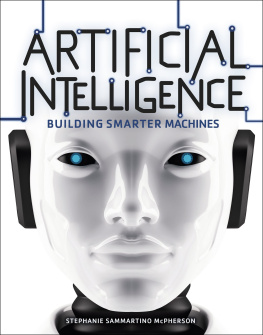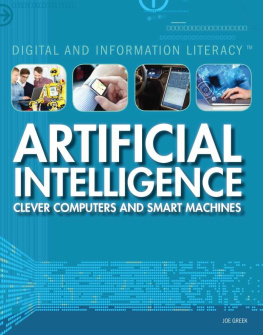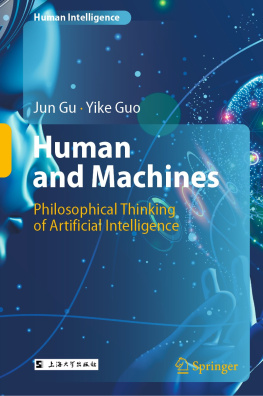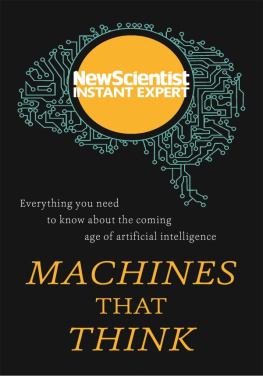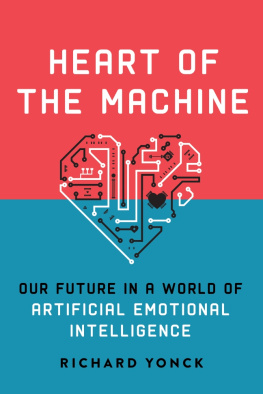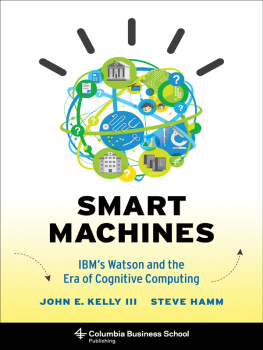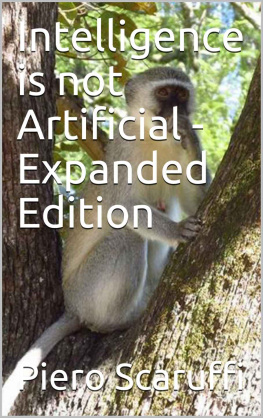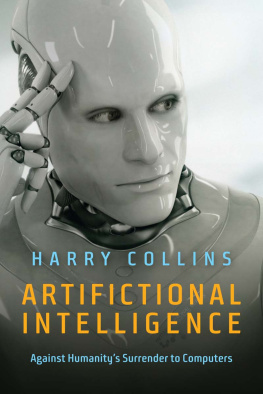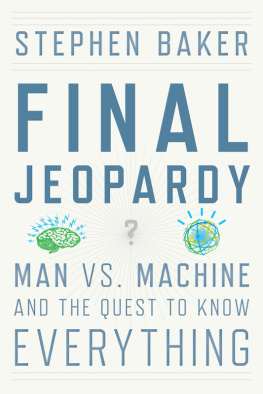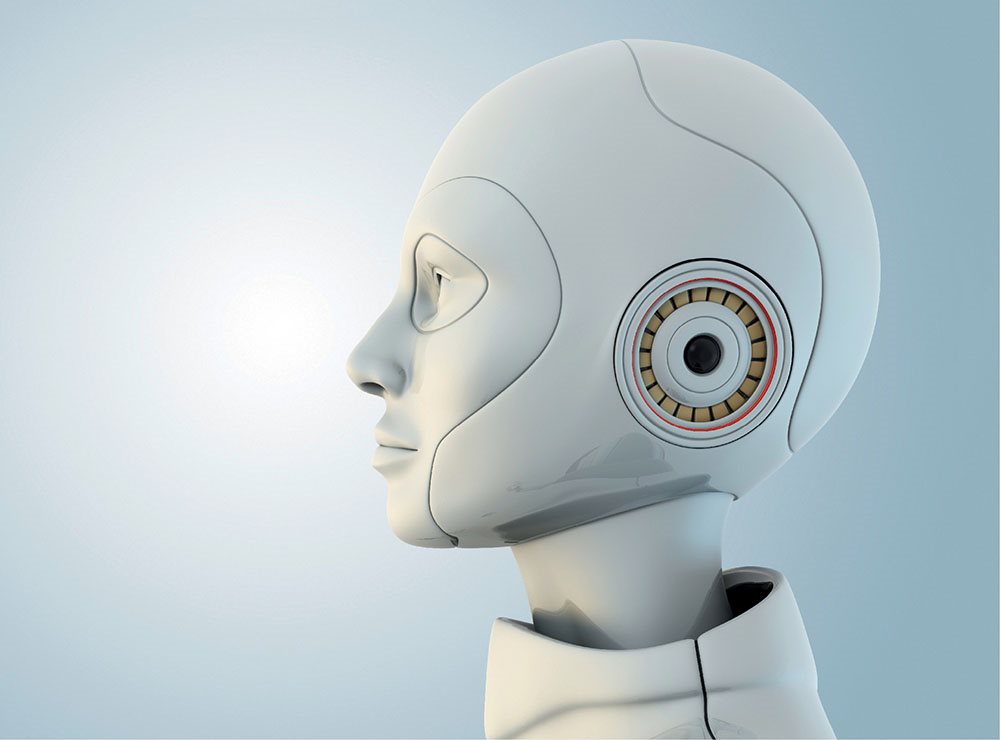For my husband, Richard
The author and publisher wish to thank Dr. Maria Gini, CSE Distinguished Professor of Computer Science and Engineering at the University of Minnesota, for her assistance with this manuscript. The author also thanks Peg Goldstein and Domenica Di Piazza for expert editorial guidance and support and Richard McPherson for encouragement and help.
Text copyright 2018 by Stephanie Sammartino McPherson
All rights reserved. International copyright secured. No part of this book may be reproduced, stored in a retrieval system, or transmitted in any form or by any meanselectronic, mechanical, photocopying, recording, or otherwisewithout the prior written permission of Lerner Publishing Group, Inc., except for the inclusion of brief quotations in an acknowledged review.
Twenty-First Century Books
A division of Lerner Publishing Group, Inc.
241 First Avenue North
Minneapolis, MN 55401 USA
For reading levels and more information, look up this title at www.lernerbooks.com.
Main body text set in Adobe Garamond Pro 11/15.
Typeface provided by Adobe Systems.
Library of Congress Cataloging-in-Publication Data
Names: McPherson, Stephanie Sammartino, author.
Title: Artificial intelligence : building smarter machines / by Stephanie Sammartino McPherson.
Description: Minneapolis : Twenty-First Century Books, [2017] | Audience: Ages 1318. | Audience: Grades 912. | Includes bibliographical references and index.
Identifiers: LCCN 2016034037 (print) | LCCN 2016051146 (ebook) | ISBN 9781512418262 (lb : alk. paper) | ISBN 9781512448627 (eb pdf)
Subjects: LCSH: Artificial intelligenceJuvenile literature. | Artificial intelligenceHistoryJuvenile literature. | Artificial intelligenceTechnological innovationsJuvenile literature. | Conscious automataJuvenile literature. | RobotsControlJuvenile literature.
Classification: LCC Q335.4 .M387 2017 (print) | LCC Q335.4 (ebook) | DDC 006.3dc23
LC record available at https://lccn.loc.gov/2016034037
Manufactured in the United States of America
1-41166-23176-2/27/2017
9781512467802 mobi
9781512467819 ePub
9781512467826 ePub
Contents
Chapter 1
Dawn of a New Age
Chapter 2
The Roots of AI
Chapter 3
Deep Learning
Chapter 4
The Rise of Robots
Chapter 5
Robots in Extreme Situations
Chapter 6
Socializing with Robots
Chapter 7
The Singularity
Chapter 8
Friendly, Hostile, or Indifferent?
Epilogue
A Glimpse of the Future
Chapter 1
Dawn of a New Age
T he popular television program Jeopardy! had never generated so much excitement. The date was February 11, 2011. Ken Jennings and Brad Rutter, the two top winners in the game shows twenty-seven-year history, had returned to vie for a $1 million prize. But the real star of the show, the reason for all the anticipation, was the third contestant. Watson was a smart machine, an artificial intelligence (AI) developed over four years by twenty-five computer engineers at the technology corporation IBM. The engineers had designed Watson specifically to challenge Jeopardy! champions.
Artificial intelligence, machinery with the ability to reason and solve problems, was nothing new. For decades, scientists had been trying, with limited success, to instill basic human skills, such as understanding language and recognizing objects, into machines. Jeopardy! posed especially formidable challenges.
The term artificial intelligence refers to robots, computers, and other machines with a humanlike ability to reason and solve problems.
A game show with a twist, Jeopardy! reverses the normal question-and-answer format. Instead of asking questions, show host Alex Trebek gives answers, called clues, and contestants provide the questions. For example, if Trebek says, the author of Harry Potter , the contestant who hits a buzzer first replies, Who is J. K. Rowling?
Watson had to comprehend the full meaning of each clue to succeed at Jeopardy! Was the phrasing straightforward or tricky? Did it involve word play or humor? Watson would require a huge knowledge base to cover the broad range of categorieseverything from sports to science to popular culturethat show up on Jeopardy! To prepare for the show, computer scientists downloaded vast amounts of information from the Internet to give Watson the huge number of facts that it needed. Just like any other contestant, Watson has been studying up, said a member of the Watson team before the contest.
As the cameras rolled for the Jeopardy! broadcast, Watson seemed to stand right there between its competitors. But its television presence, a logo on a computer screen, was just for show. The real Watson, comprising ten racks of computer servers, was located off-site. Instead of listening to the statements read by Trebek, Watson received its clues as digital text that it analyzed at lightning speed. Its performance wasnt perfect, but it quickly established a lead over its human opponents. By the end of the third day, it had won the $1 million purse.
Ken Jennings (left) and Brad Rutter (right) compete with Watson (center) , an artificial intelligence created by IBM, during a practice round on the TV quiz show Jeopardy! In the final contest, Watson beat out the two humans to win a $1 million prize.
Ken Jennings, famous for his seventy-four-game winning streak on the show, took his defeat in stride. I for one welcome our new computer overlords, he said.
For those who fear that machines really could come to dominate humans, Jenningss statement hit close to home. Watsons victory raises difficult questions. Did Watson really think? Did it understand its participation in a quiz show? Can machines acquire self-awareness? If so, is this a promising or a dangerous situation for humans?
Scientists and technologists have come down on both sides of the debate. Some, such as computer scientist Raymond Kurzweil, director of engineering at Google, predict that artificial intelligence will improve life for all humanity and may even extend the human life span indefinitely. Others, such as British physicist Stephen Hawking, fear that the age of supersmart machines could threaten our very existence on Earth. Although no machine, not even Watson, comes close to matching human intelligence, many scientists believe it is only a matter of time before technology reaches this milestone.
Deep Blue
Jeopardy! was not the first game in which humans faced a machine challenger. In the late twentieth century, various organizations staged chess competitions pitting human players against computers, with the humans always coming out on top. A much-publicized six-game match between IBMs Deep Blue computer and Russian world chess champion Garry Kasparov in 1996 also ended with a human victory.
After Deep Blues defeat, IBM scientists began improving the computer for a rematch the next year. Although the updated computer could review two hundred million possible chess moves each second and choose the ones most likely to lead to victory, Kasparov won the first game. Deep Blue took the second game, but games 3, 4, and 5 ended in draws. Tension mounted as the final game began on May 11, 1997. When Deep Blue won the game, thereby winning the match two games to one, the entire world took note. For many, the victory highlighted in a surprising and vivid way the growing power of computers.
Strong and Weak
Experts on artificial intelligence divide the machines into several types. An artificial general intelligence (AGI), also called a strong artificial intelligence, would be a true thinking machine, able to learn on its own and modify its own programming without human input. In theory, an AGI would be able to solve any problem that a human could decipher. It would not be narrowly tailored to perform a specific task, such as analyzing the stock market or conducting computer searches. Instead, it would be able to deal with a broad range of issues. Over time, as it accumulated knowledge, an AGI would get smarter and smarter.
Next page
